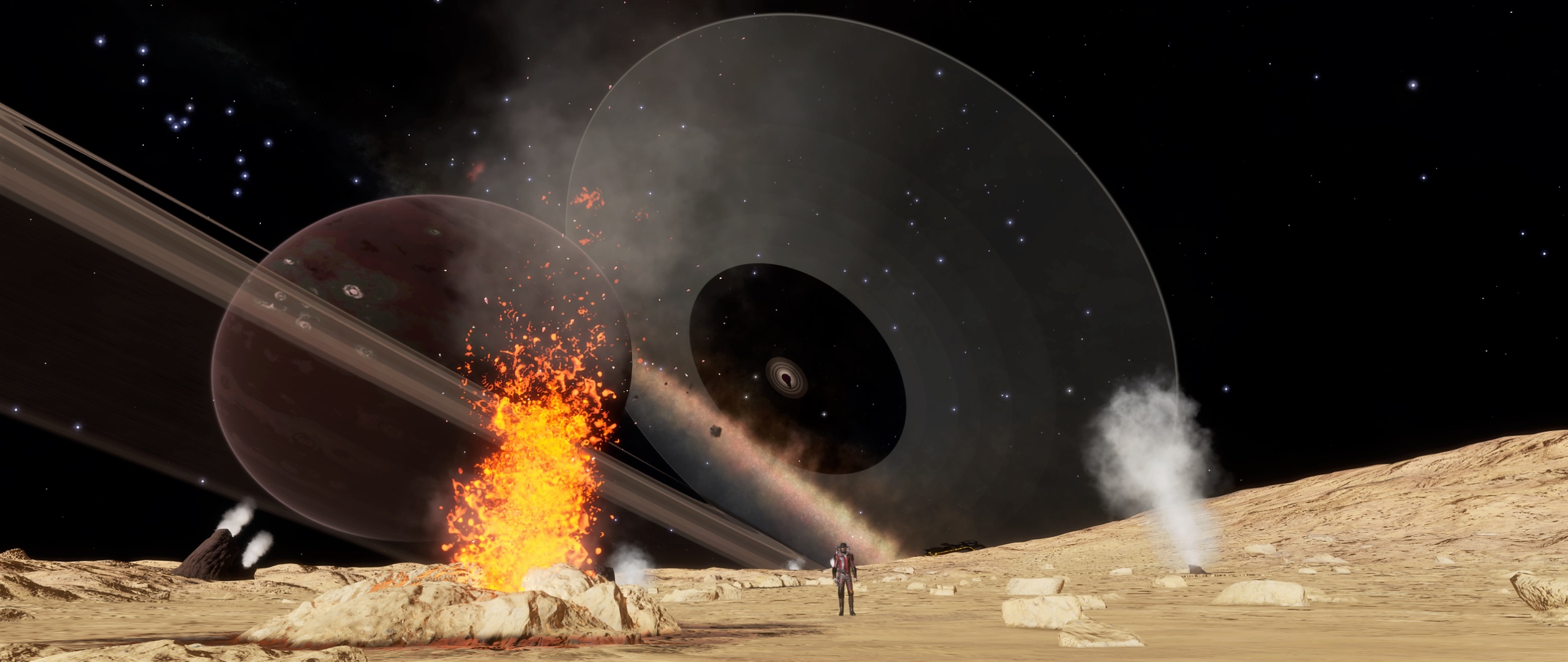
Waypoint 17: VV Cephei
23 Jul 2022As we get closer and closer to The Bubble, we start seeing a great many familiar sights. Settlements, Stations, maybe some Xenos if you’re unlucky. We’ve seen many thousands of unfamiliar and strange things over the last four months but it’s nice to finally see a few things I’ve already seen. I don’t know about you, Explorers, but it’s nice to almost be home.
And yet, the journey is not over. This is the penultimate week for Lost Souls 3 and it features a singularly rare star, a lovely nebula and for the final time on Lost Souls 3 we will meet up outside The Bubble.
I just got chills writing that.
As always, Expedition Leadership wishes you a great many finds and safe travels this week!

POI 1: V509 Cassiopeiae
System: V509 Cassiopeiae
V509 Cassiopeiae is a yellow hypergiant, one of the rarest types of stars. Current estimates suggest there are no more than 15 of these stars in the entire galaxy. Yellow hypergiants are an extremely short-lived phase of late stellar evolution of massive O-type stars. These stars evolve from red hypergiants to blue hypergiants in a phase that lasts only a few thousand years. Many stars lack the mass to go through this phase, or have a much greater mass and end as a supernova.
V509 Cassiopeiae currently has 11 solar masses and a radius 600 times larger than Sol; this would encompass the Sol system past the orbit of Mars. V509 has varied significantly in temperature and size over periods as short as 1 year, indicating that this phase is highly unstable. The attached photo is from a metal-rich orbiting planet at 2300 light-seconds distance.
POI 2: Cupid’s Arrow
System: S171 34
Cupid’s Arrow is a tourist beacon at the edge of the NGC 7822 Nebula. As described by the tourist beacon: “The beautiful NGC 7822 nebula is pierced by a line of O-stars – therefore it has been compared to Cupid’s arrow piercing a heart.” The reference photo is taken from nearby system NGC 7822 Sector KC-V c2-2.
Waypoint 17: VV Cephei
System: VV Cephei
VV Cephei is a stellar mystery, one star missing an another star greatly changed. In the 20th century astronomers observed VV Cepehi as an eclisping binary pair of a red supergiant and a blue-white dwarf companion star. The pair had one of the longest known eclipsing cycles, lasting over 20 years. Based on data from this pair, the red supergiant was determined to have over 1000 solar radii and making it one of the largest known stars by radii. The only other bodies in this system are three high-metal content worlds.
After the invention of frameshift drive, exploration of the VV Cephei pair stunned astrophysicists. The blue-white companion was entirely absent, and the red supergiant was only 318 solar radii. Did astronomers miss a cataclysmic event, or had their observations been wrong for so long? Theories are being hastily reviewed.
July 24th Meetup
Meetup location is at SLEGOU LU-N B21-0 1 Geo site 2.
| Region | Meetup Time | Mass Jump Time |
|---|---|---|
| Europe | 1900 UTC | 2000 UTC |
| Americas | 2300 UTC | 0000 UTC |